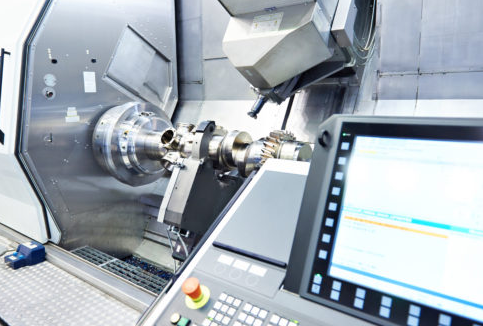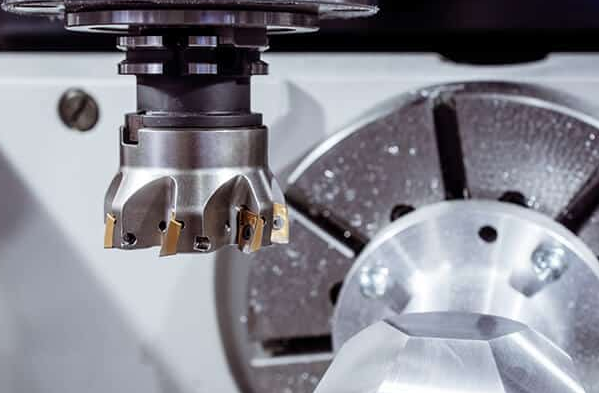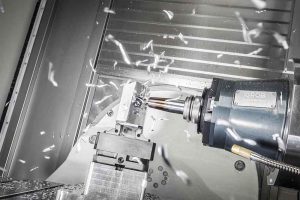CNC machining offers superior precision with tolerances as tight as +/- 0.005 inches, enhances safety by reducing operator interaction with machinery, and allows for seamless integration with CAD/CAM software, speeding up the design to production process.
Precision and Accuracy
One of the standout features of CNC machining is its extraordinary precision. In comparison with manual work and general automated machinery, computer-controlled tools always strive for the same level of dimensional accuracy. Typically, CNC devices have to keep to a tolerance within +/- 0.005 inches, a level of consistency that is invaluable to many industries. A good example is the manufacturing of aeroplanes, which require extremely high levels of precision. For instance, even a slight deviation in the geometry of turbine blades can lead their engines to fail, and CNC devices are the only tools that can keep up the required precision in multiple production runs.
In addition to aircraft equipment, precise manufacturing is also crucial for other types of transport. For example, in the automotive industry, precision manufacturing with the use of CNC devices is employed to create engine components, transmissions, and drives, all of which require a high degree of accuracy. Of course, all of these machines and devices also require regular maintenance, and the accuracy of their parts greatly simplifies the process. Thanks to the use of CNC technology, it is possible to ensure that all parts are interchangeable and fit perfectly. This is significant because their proper functioning has a significant impact on drivers’ and passengers’ safety.
The same level of precision is used to manufacture mechanical or electronic components for a range of other industries. An especially important example is the creation of medical equipment and devices. For instance, the production of implants calls for a high level of precision in order to guarantee that they could be easily inserted and not rejected by the body. Thanks to CNC machining, it is now possible to create grooved and contoured titanium surfaces on an implant, similarly to the characteristics of a natural joint that help bones grow into and around the implant. In effect, the use of alternative machinery with a lower level of specification would not be able to produce an object with the accuracy above 0.001 inch, which is required to make the anatomically corrected features of surgical implants.

Repeatability
One of the most significant advantages of CNC machining as compared to traditional methods is repeatability. In mass production conditions, this consistency guarantees that all parts created are almost identical to the prototype. For example, in the automotive industry, engine components call for high precision. CNC machines allow manufacturers to guarantee absolute uniformity of over a thousand parts, each with a tolerance of 0.0005 inches. It is translated to individual engine parts fitting exactly as intended to multiply the whole’s performance and efficiency. Similarly, CNC machines are essential in the manufacturing of electronics.
These devices could not have been produced at that scale and with that high level of complexity with traditional machining. In contrast to the highest precision and noticed energy prices, faulty appliances due to the imprecision of their parts could not have been afforded. The parts, of course, include various enclosures and cases, but one cannot overlook the printed circuit boards. Every part must have appropriate holes to put a screw in, for example, as otherwise, the enclosure cannot be closed. Only CNC machines are capable of producing hundreds of thousands of these individual parts with repeatability.
Many industries are capable of devising fully automated production lines with the help of CNC technology. They do not rely on the experience of the workers or even general instructions but follow the model provided by simply continuously producing a single part, with axes returned to their initial position each time. With traditional machining, every rotation or displacement could result in a faulty part requiring changes to the machine, while CNC machining requires quality assurance to be only relevant during scheduling as even the least precise specifications are still met without any products being wasted or requiring rework.

Complexity and Flexibility
CNC machining is an advanced technology that vastly increases the complexity and flexibility of manufacturing processes. It allows creating of parts that would be very difficult, if not impossible to machine using traditional technology. Such capability has significant uses for applications that require highly complex parts with intricate designs and high precision of manufacturing. Aerospace industry uses such technology to produce many of the parts that are used to build and repair modern aircraft.
Typically, these parts have complicated and unconventional geometries. CNC machines are particularly well-suited for so-called 3D cutting on multiple axes. For example, airfoil blades with a complex contour and intricate cooling channels can be produced using this technology. These parts would be difficult to manufacture using traditional technology because of its limitation in tooling and motion control.
Another industry that benefits from such capabilities is medical. Many components of orthopedic implants and surgical instruments need to have complex and specialized shapes to perform their function. Many of these parts need to be customized, meaning that they have highly specific shapes for each patient. Stemmed knee implants are an example of such parts. CNC machines are capable of producing these without needing a new set of tools for each implant, as traditional machines would.
They could also quickly switch from producing one type of part to another, simply my changing the software control. For example, switching from a knee implant to a hip socket would take a CNC machine a few minutes, while it would require an hour of manual retooling for a traditional machine. This ability to adapt quickly is important not only because it increases the speed of machining, but also because it reduces the costs associated with having a big inventory of parts and tools.
It is also an advantage from a manufacturing cycle standpoint. This is in addition to the benefits of CNC’s greater complexity, which allows it to perform more complicated tasks. CNC machines can also easily work with a variety of materials, from soft plastics to titanium. Traditionally, each of these would require a separate machine or a different set of tools, neither of these changes are necessary with CNC.
Speed
The increased speed at which CNC machines operate provides a substantial advantage over traditional machining. In particular, these allow for shorter production cycles, so companies can respond to market demands faster and more efficiently. The entire process is streamlined, as multiple steps can be completed in one continuous motion. Thus, these machines enable faster and more efficient completion of production from design to the final stages.
For example, many modern cars including engines are made in record time, thanks to the reduced lead times. Complex parts are formed using CNC machines instead of consumer-grade ones. In addition, pianos are also largely made with CNC machines. These are used to create soundboards and other complex wooden pieces in a matter of hours. Their speed is uncanny, as a CNC machine capable of reaching 34,000RPM can finish all the spreads and internal cuts of a piston in a matter of a few minutes. It can even work around the part without the need for a rotation and repositioning, woefully common in additional operations.
The use of such machines allows for single-day completion of tasks which may previously take weeks to complete. The speed is necessary for production in some industries, as for example, an electronic housing may need a precision cutout for its ports at the same time to make it in time for the speed factory assemblers require it. Furthermore, traditional operations require many other steps to complete the necessary operation. One would need to mark, set up the part, measure and adjust repeatedly, slowly moving it towards the port creation. CNC technology finds it time-efficient to cut everything first, as rapidly as it is possible to cut materials, which manual operations could not.
Thus, a couple of minutes are enough to make a port in a standard aluminum housing, while traditional methods would need over an hour working with it. Finally, CNC machines run tirelessly. The manual improvements and general machine use lead to mandatory breaks, so specialists can only operate them for half to three-quarters of a normal working day. What is more, as with any breaking machine, they require a sustained period of rest. CNC machines can run without any such interruptions, making it as fast to work through large orders, as the machines need feeding only occasionally.

Labor and Skill Requirements
On the one hand, CNC machining makes the traditional manual machining process far less labor-intensive, requiring fewer people with fewer specific machining skills. The focus of work becomes the programming and maintenance of a computerized digital control system. This reduces the risk of human error and increases productivity. The industries which use this approach have less apparatus requiring competent machinists. As a result, learning to operate these devices through virtual tests, training, and computer simulation, rather than just practical work, is much easier.
On the other hand, this process also presupposes the reduced direct contact of a worker with machines. For instance, in a company which manufactures automotive components, there were once five people operating a machine, with just one needed to oversee the same machine when it operates as CNC. With the main part of the working process taking place elsewhere, it is possible to suppose that the workers will be safer as they will be in fewer accidents related to the working process.
Human errors which had to be factored into the time of cutting and a requirement for the machine to start anew are minimized. This shortens the time and amount of the workpiece and the fact that machines are more precise cuts down the time of production, hence, costs. It would also lessen the financial liabilities related to job-related traumas and insurance of a higher number of operators. The costs could also go down if fewer people have to be paid to do the same amount of work.
Material Waste Reduction
Compared to manual and other traditional machining techniques, CNC machining significantly increases the material efficiency and reduces the waste. This can be attributed to the widely known precision of CNC machines and the ability of operators to draw detailed and complex designs and then implement them with the help of software. High material efficiency is noteworthy in the aerospace and automotive industries and other industrial sectors where the use of titanium and other high-cost advanced alloys is common. Specifically, in manufacturing airplanes and rockets, materials represent a considerable part of the production budget, so the reduction in waste is critical.
Under the traditional approach to manufacturing, the waste may constitute anywhere from 10 to 15%, as the technology used that is inferior to CNC machining is not able to achieve such high precision. These methods require an operator to perform most of the calculations needed to obtain the desired shape and often do not offer any automatic adjustment of the tool paths. The CNC equipment, on the other hand, is able to reduce waste to as little as 5% by executing intricate and otherwise virtually impossible cuts. As a result, the material is used more efficiently and most of it will end up in the product instead of being trimmed away and discarded.
The role of the software is paramount in achieving this result as it first generates an overview of the layout and then takes into consideration the discovered potential cut varieties and makes further improvements based on equipment parameters. The software is also able to optimize the overall layout and ensure as many pieces as possible are cut out of a single material sheet. Advanced nesting algorithms allow achieving significantly better material utilization rates, as pieces are arranged in patterns that minimize the number of gaps between them and overlapping. Many automotive components, for example, have to cut several identical parts from a single metal sheet, and the waste reduction can be significant. Overall, the advantages of low waste are reduced costs, both due to the use of less material and the use of less energy and fewer resources in maximum extraction and processing of raw materials.

Safety
CNC machining is significantly contributing to safety in manufacturing activities through automation of several securely unsafe processes that would initially require direct human participation. One of the many safety bases is absent of injuries that frequently happen at manually machined facilities. The danger of various cuts, amputations, and crushing injuries does not occur at facilities of CNC machinery since they are all automated. In traditional machine applications, moving parts and other sharp tools are many times around manual operators. For manual lathe turning, engineers have to adjust feeds and speed, which can be done only near the machine.
At the high speed of rotation of various components, the twist of the lathe into entanglement can cause a very severe injury. However, traditional machines are not enclosed, and CNC machinery is safely closed and very secure to an operator. CNC machines, such as cutting tools, are not prevented from achieving cuts and shapes, and chips and debris are not immune to injuries. Instruments with this CIF and have problems requiring depth are prevented from affecting operators by hand-to-finger contacts. CNC machines, undeformed environments, have secondary operations such as sand, leveling, or denoting drot. CNC machinery is also what we call safer, which is especially important in high operations such as the automotive industry. At these factories, a lot of work is done in a very short time, and carelessness can cause an errant work injury.
Another aspect that makes CNC machining safer is the absence of monotony. In traditional semi-automatic CNC machines, operators manually perform the entire manufacturing process. Programming, on the other hand, requires a sculptor’s critical thinking and perseverance to monitor orders to make more tools. In order to prevent the stimulant to regulate and cut the CNC part from the material in conventional operations, fatigue hazard is awake because mental and physical exhaustion is many times required. These efforts coming has many advantages as avoiding hands to finger cutting together. There are fewer resources on companies that use CNC machining and the occupant’s side more or less of an accident record than others. Overall CNC’s have been very beneficial and extra education is the incept for better use of the application.
Integration with Modern Design Technologies
CNC machining is well-integrated with modern design technologies, mainly in the form of CAD and CAM software. This allows for a smooth transition from design to production, making the manufacturing process easier and nearly error-free. This integration provides benefits in a variety of industries, such as consumer electronics, as they rely on the rapid creation of new products. For example, if a company manufacturing smartphones requires a new design for a phone case, it could be drawn in a CAD program.
Then, a CAM software could be used to transform the parameters of the 3D model directly into the programming language of a CNC machine. It would be possible to develop a prototype product and proceed to mass production without the need to change the CAM parameters, thereby ensuring that the final products match the design perfectly. Not only is this process quick, but it is also applicable to complex parts requiring high precision.
Aircraft engine parts are an example of the use of code integration between CNC machines and CAM software because the machines can produce parts with accuracies that human workers would be unable to attain. A digital 3D model of the parts is created, and then a CNC machine manufactures them, adhering to the details of the model to determine dimensions.







